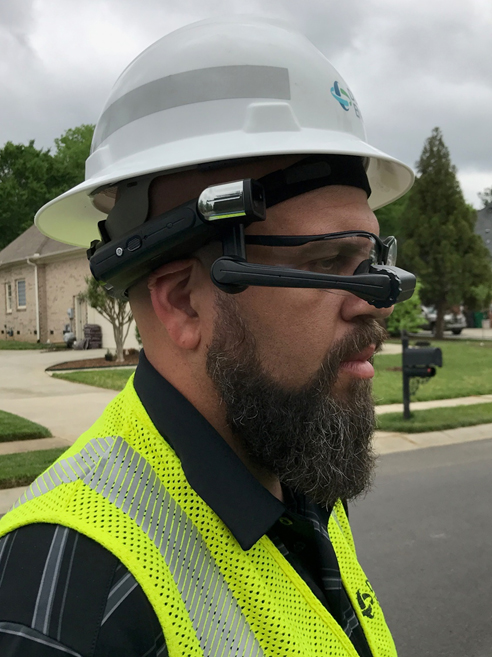EPRI Looks at Augmented Reality for Storm Response and Nuclear Plants
For the U.S. electric power industry, its mutual assistance network is essential in responding to destructive hurricanes, tornadoes, and winter storms. For decades, this nationwide, voluntary partnership among electric companies has expedited outage restoration through the network’s access to workers and equipment. The track record is strong but includes this fundamental challenge: Visiting line workers may be unfamiliar with the area, and this can hamper and delay work.
“You have a lot of people who come to a service territory to do storm restoration, and usually it is the first time they’ve ever been there,” said Aleksandar Vukojevic, manager of Duke Energy’s Emerging Technologies Office.

Since 2014, Duke Energy and EPRI have been testing a tool that could help employees and visiting recovery crews quickly grasp the lay of an unfamiliar land: augmented reality–enabled smart glasses. Their collaborative research with telecommunications company Verizon equipped a team of line workers with glasses during a simulated storm response. Made by RealWear, the glasses use geographic information systems (GIS) to provide workers with information critical for repairing damaged utility infrastructure.
“When you come to a particular area, these glasses tell you where all the components should be located, whether it be a downed utility pole or the equipment attached to that pole,” said Vukojevic.
“The GIS has detailed information on each component,” said EPRI Technical Executive John Simmins. “It knows a pole’s height and what it’s made of—metal or composite material.”
The glasses can automatically send an order to a utility warehouse for the equipment needed for repairs. “While wearing the glasses, a user can indicate that a pole or other part is missing,” said Simmins. “The information is sent to the warehouse, where parts are packaged and sent out on the next truck. This takes hours out of the process and reduces errors.”
Results from the simulated storm response were encouraging to the R&D team. The line workers found the smart glasses easy to use, adjusting to them in just minutes. Workers using the glasses completed tasks more quickly, with fewer errors relative to workers using pen and paper to document storm damage.
The Promise of Augmented Reality for Nuclear Plant Construction
In July 2017, EPRI released a study evaluating augmented reality’s potential to improve the productivity, efficiency, reliability, safety, and security of nuclear power plant construction and operation.
“As the nuclear industry in the United States grapples with economic headwinds driven by low natural gas and renewable energy costs, a key strategy for successful plant construction involves using technology to reduce construction timelines, improve quality and repeatability, and increase worker safety,” said EPRI Senior Technical Leader Eric Harvey.
EPRI researchers reviewed more than 2,000 studies on augmented reality, interviewed 10 experts, and surveyed 32 nuclear utilities. A key takeaway: The nuclear utilities expressed significant interest in augmented reality, with nearly 80% indicating that augmented reality–enabled applications should be an integral part of the tool kit of operations and maintenance workers. However, more focused studies on the application of augmented reality are needed. Many expressed concerns about an uncertain business case. Researchers found that the building and construction industries in general have already taken the initiative to adopt the technology.
The study points to specific ways that augmented reality could reduce construction time and worker mistakes as well as improve safety. Among the potential applications:
- Connect field technicians with subject matter experts via wireless communication for real-time instruction on complicated tasks.
- Project a 3-D model of a nuclear plant onto a table or physical model to facilitate discussions about construction or to deliver training to construction workers.
- Use electronic boundaries to alert plant workers to radiation hazard zones.
Much work remains before augmented reality can be adopted broadly in nuclear plants. Owners, operators, and construction teams will need to conduct demonstration projects, assess costs and benefits, make a solid financial case, address privacy and cyber security, and potentially overhaul traditional construction and maintenance workflows.
Regardless of the challenges, EPRI’s Simmins is confident that augmented reality will become a versatile tool across the utility industry. “Think about the maps on your cell phone that give you street-by-street instructions. They enable an ease of navigation that is not possible with paper maps,” he said. “Augmented reality will be the same way. Years from now, people will say, ‘How in the world did we do this before augmented reality?’”
Key EPRI Technical Experts:
John Simmins, Eric Harvey


